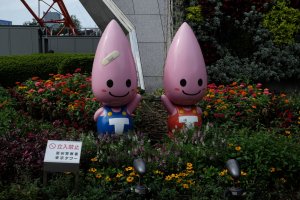Since the first five minutes I arrived to Japan I’ve constantly listened to a word. I’ve heard it from children, teenagers and adults. I don’t think a day has passed that I haven’t seen someone refer to something as kawaii. With time I’ve understood that this word is a synonym for cute and lovely. However, I feel there is a deeper root to this word. More than just a definition is part of the Japanese lifestyle and culture. I was interested in understanding more about it.
Kawaii originally derives from kao hayushi, used to refer as someone’s flushing of the face. Over time it transformed into the modern meaning of adorable. Although is mostly written in hiragana (one of the Japanese writing systems along with katakana and kanji), it has been adapted into kanji as well.
Even thought the original word can be traced back to the eleventh century, the modern history of this important cultural component in Japan emerged in the 1970’s. Many teenagers at this time started writing with thin pencils, opposed to the traditional thick writing. The thin lines allowed to write in big characters and to insert small pictures into them. Many schools banned this type of writing because it was difficult to read. However, several magazines and comics observing this new trend, introduced it into their advertisement. This type of writing is now referred as round, kitten, comic, or child writing.
Given the growing trend of cuteness, companies as Sanrio introduced merchandise like Hello Kitty. Later on, music, tv, and movie idols projecting this new culture started to rise. People began to imitate their mannerisms and fashion. The new obsession with kawaii continued to progress.
Over time, the impact of the kawaii culture has influenced not only the Japanese lifestyle and culture, it has also had a dramatic impact on entertainment, toys, food, clothes and service industries. This effect has been observed not only in Japan but also in international markets, mostly in Asia and United States.
When visiting Japan is almost inevitable to observe and be part of the kawaii experience. This cuteness can be found almost everywhere in the street, inside buildings and companies. Various government, cultural, and even security institutions promote kawaii. Many have their own mascots. Kumamon and Hikonyan, the mascots of Kumamoto Prefecture and Hikone City respectively, are the most popular.
Now that I understand more about the history, roots and impact of Kawaii is even more interesting to continue observing the social behavior and influence of this cuteness born in Japan.



























